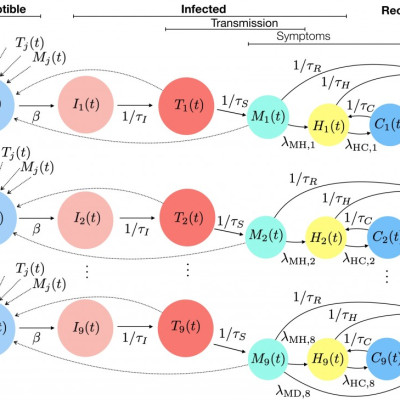Publication
Relaxing quarantine after an epidemic: A mathematical study of the Spanish COVID-19 case
V.M. Pérez-García
Researchgate preprint doi:10.13140/RG.2.2.36674.73929/1
MOLAB authors
Abstract
The COVID-19 pandemy has become the most relevant health emergency in decades. After the first outburst limited to China, many European countries and the US have suffered outbreaks of the disease with exponential growth of both the number of cases and deaths. Some countries, such as China initially and now many others have opted for strong contention strategies with severe limitations of people's mobility, public and social events, educational restrictions and even complete lockdown of certain geographical regions. While this can lead to a transient control of the disease, in the long term all countries will be exposed to new outbreaks. Other countries are considering less severe approaches. The main question, is what to do after that, i.e. once the disease is controlled after the first wave of infections has vanished under strict quarantine. In this paper we consider several non-pharmaceutical strategies, taking as an example the case of Spain. For the analysis we will use a coupled ordinary differential equation metapopulation model accounting for the different courses of the disease in different age groups.















